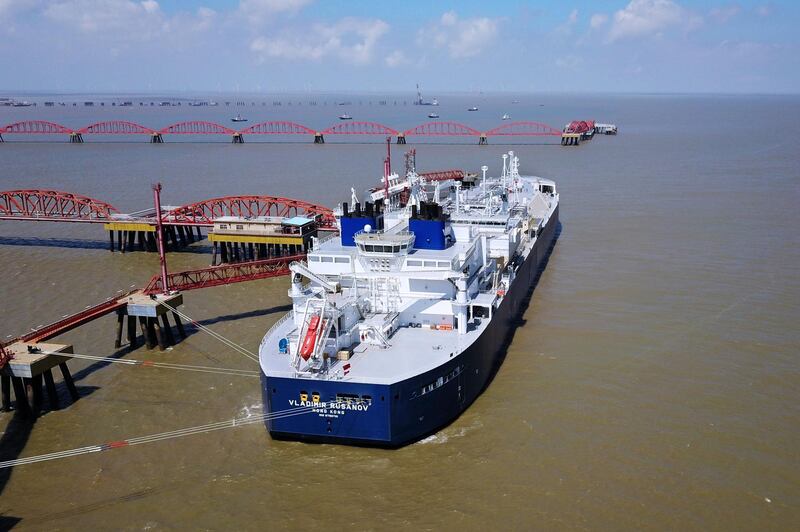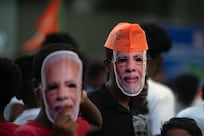“Let China sleep, for when she wakes, she will shake the world,” as Napoleon is said to have observed.
In the past two decades, China’s prodigious appetite has indeed shaken up the world of commodities, sending demand and prices soaring. But one commodity, natural gas, has escaped China’s grasp - until recently.
China is the world’s largest importer of oil, takes in two thirds of soya beans and seaborne iron ore; it is the biggest generator of electricity; and it consumes half of all the world’s coal, aluminium and copper. It has a third of all the solar power in the world and the third-largest nuclear power industry. In three years, it used more cement to build its new cities, airports and bridges than the US did in the entire 20th century. From 2003 onwards, its soaring energy demand sent oil prices to record heights, and therefore indirectly caused the Arabian Gulf’s economic boom as well as underpinning the Putinist system in Russia.
But in gas, China is not a dominant player. It consumes just 6.6 per cent of the world’s total, although it is still the world’s third-largest market after the US and Russia.
China’s endowment of gas is relatively limited compared to its population and economy and it has vast coal resources, which it has always relied on for cheap, secure energy and jobs.
It has become clear this coal addiction is unsustainable – the country releases more than a quarter of the world’s carbon dioxide, making it the planet’s biggest single greenhouse gas emitter by far. And local pollution, the mercury, acidic sulphur oxides and fine particulates, cuts life expectancy by at least three years and leaves a semi-permanent “brown cloud” hovering over Asia.
But in 2017, China decided to get tough on pollution. It banned coal heating across the 200,000 square kilometre Beijing-Tianjin-Hebei Capital Economic Circle area in the north, aiming to replace it with gas and electricity. Policy issued in June last year called for converting industries to use gas and the development of gas power plants. The resulting surge in demand, up more than 15 per cent in one year, caused shortages, as pipelines, storage and import terminals were unable to keep up.
There had been a fear that the global liquefied natural gas (LNG) market would be over supplied for years, as a wave of recent mega-projects in Australia, the US and elsewhere reached completion. Prices halved from 2015 to 2016, but they rebounded in 2017 as China’s LNG imports rose 50 per cent.
Now, the industry is growing confident in strong Chinese demand, to the point of approving new projects to hit the market in the early 2020s. The country overtook South Korea as the world’s second-largest LNG buyer last year, and imports are set to more than double by 2025; only Japan is now ahead of it.
Meanwhile, Russia’s chose to bet big on its “Power of Siberia” pipeline to eastern China, whose cost, along with the field developments to feed it, is estimated at $55 billion. From receiving almost no gas from Russia today, China next year will suddenly vault to its second-largest customer after Germany.
_______________
Read more:
LNG shippers set to gain as Arctic sea routes open up
Concern grows over Africa's Chinese debt load
_______________
So China has suddenly become a key driver of global natural gas markets. And this makes the outlook for gas more promising but much more uncertain. The Middle Kingdom’s use of gas is determined by a complex interplay of economics and policy, and much of the economic side comes down to decisions by individual Chinese households and industries in the face of constantly shifting government directives.
On the policy side, the gas shortages seen last winter were undesirable, so the government may ease off on coal conversion until infrastructure catches up. And the escalating tariffs by the White House on imports from China have led Beijing to retaliate against US products, including LNG. This in turn casts doubt over the long list of American LNG export projects on the drawing board, or causes them to scramble to find buyers elsewhere.
Unlike Japan, South Korea and Taiwan, the leading LNG importers historically, China has ample access to other sources of energy – its own coal and gas, and gas imports from Central Asia, Russia and Burma. How much it chooses to rely on seaborne LNG versus alternatives depends on relative prices as well as decisions on pollution and security of supply.
If China relaxes the grip of its big state companies on the domestic market, it could establish a key pricing hub in the north-east, where LNG imports, local gas and pipelines from Central Asia and Russia converge.
This is also an important geopolitical shift. The economic fates of Russia’s Siberian hinterland and Central Asia, particularly Turkmenistan, will be more closely bound to their giant eastern neighbour. China will have to manage greater dependence on imports, including those brought in through sea lanes through the Indian Ocean, a vulnerability it is already familiar with in oil.
The leading Chinese oil firms will acquire their own LNG technology and take stakes in overseas projects. They have sought to invest in US shale in Alaska and West Virginia but this looks problematic as trade war concerns mount. Instead they will turn to Australia, East Africa and the Middle East.
Gas may still only be an aperitif in China’s vast energy complex but the country’s enourmous appetite means its every move matters.
The turn to gas is good news for choking Chinese citizens and the global climate. It will delight gas exporters but brings a whole new set of strategic conundrums.
Robin M Mills is CEO of Qamar Energy, and author of The Myth of the Oil Crisis






